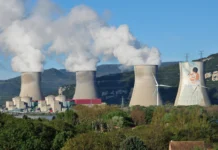
VEOLIA says it has achieved improvements with the amount of power that can be derived from the anaerobic digestion (AD) of sludge, employing a system which reduces the amount of hydrogen sulphide present in the resulting gas mixture.
Wastewater treatment plants process large amounts of sludge through AD, with the resulting biogas used to generate electricity using combined heat and power plants. The new system reduces the amount of hydrogen sulphide (H2S) in the biogas output from the AD process and the pilot project has now apparently demonstrated a 14% increase in renewable electricity generation. With estimated pay- back on investment of less than two years, it is also commercially better than technologies requiring biological or chemical dosing systems, says Veolia. By moving towards energy self-sufficiency it will also have the further benefit of reducing the electricity demand on the UK’s electricity grid.
Commenting on the development, John Abraham, COO Water at Veolia said: “Recent estimates indicate that the water industry could be self-sustaining for electricity by harnessing the 11 billion litre annual flow of waste water. Our application of technology to this process demonstrates how we can help deliver greater sustainability for the industry using waste water to energy systems, and also meet water industry carbon reduction targets. By providing an additional 14% of renewable energy from an existing resource it also takes a further step towards the circular economy objectives recently agreed in Davos.”
Around 190 UK wastewater sites now produce biogas to generate electricity which is used on site or exported to the national grid. To maximize the efficiency of this form of generation Veolia’s team has developed an existing technology, used in the processing of food waste, to increase the quality of the biogas and derive more renewable electricity and heat. The fully automated system accurately tracks biogas quality parameters to treat the sludge, and this process results in an 80% reduction in H2S, helping increase the output and maintain the efficiency of connected downstream energy plant.







